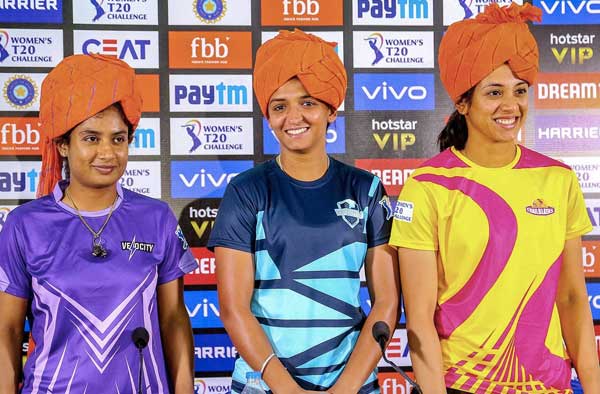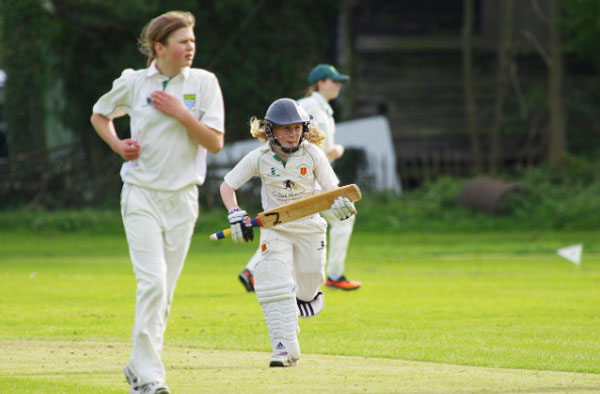The current gaming world is advancing fast, giving rise to new games and, if not, giving female players a chance to play games they never played before.
Cricket is one of the games that females have given themselves to play. The world has seen stunning performances from women in different cricket leagues across the globe. Today, some of the women’s most popular cricket tournaments include ICC Women’s World Cup, Women’s Indian Premier League, and Senior Women’s T20 Challengers Trophy.

Additionally, countries like India, South Africa, Australia, England, and New Zealand have strong cricket teams for females. This not only points to the enormous potential female cricket promises but also shows that women are so much into the game now.
Despite the efforts, female cricket seems a bit different from that of men. Consequently, this post seeks to identify if female cricket can match up with male cricket’s popularity.
A Brief Trace of Women’s Cricket
Your guess is as good as mine on the age of female cricket. Cricket for females started way back in 1745. The debut cricket team globally came from the UK when the villages of Hambledon and Bramley played a match against each other.
In Australia, the first female cricket team was formed by Lily Poulett-Harris in 1894. Besides, Lily starred in the formation of the Oyster Cove team, known for their electrifying performances in the game.

When these preliminary efforts came into place, a need arose in 1958 to form the International Women’s Cricket Council. At the time, the council’s mandate was to oversee cricket for women in Denmark, Australia, Netherlands, New Zealand, West Indies, South Africa, and England.
This formed the cornerstone of women’s cricket in the world. From them, many teams have stemmed, many matches have been played, and female cricket is moving to new levels of perfection every day.
Comparing the Popularity of Males and Females Cricket – A Real Case Study
Back to the down memory lanes of the 7th edition of the ICC T20 Women’s World Cup. When the tournament began in Australia in 2020, it did better than expected in terms of followership. The female cricket tournament glued over 180 million viewers on their screens to see how women could fight it out on the court. This was widely celebrated as it was not a mean fete.
The above case study confirms our theory and validates our question. Firstly, it confirms that men’s cricket is more popular than women’s. In theory, this can also be confirmed in the casino and cricket sites comparison, as casino games attract more men than women.
Therefore, we need to establish if women’s cricket can or will at one time match the popularity of men’s cricket.
Why Female Cricket May Not Match the Popularity of Male Cricket
To start with, we need to find out why female cricket is not as popular as male cricket. Below are the reasons:
1. Participation Gap between Men and Women
Research has already proven a participation gap in the numbers of men and women in sports. While the number of men is one and a half million more than the number of women, there is little talent on the side of women.
Although these numbers are for sports in general, they accurately depict limited talent in cricket for women.
2. Training Dedication
Men tend to do better than women in cricket due to their training levels. While women, at times, have rigorous and continuous training, it cannot match that of men. Of course, long training results in better moves in the game. The rare and exciting skill gained attracts a bigger audience, and for this reason, men score better than women.
Female cricketers must go beyond the usual sports training to attract a greater audience.
3. Clubs that Female Cricketers Play For
Men’s cricket existed as early as 1611. Female cricket started in 1894, and this gap has affected the performance and popularity of female cricket games.
In conclusion, the early start of men’s cricket has made it possible to have better clubs and tournaments for men cricketers than women. This translates to better training resources and, eventually, better team players.
In the long run, this affects how sports lovers perceive cricket for women.
4. Gender bias
This is probably why female cricket has secured a vast fan base in this century. Unfortunately, society has not fully believed that women can play sports like cricket. This is one thing that has kept the game hanging on the low.
Many societies are only shifting their beliefs now. They are slowly accepting that women can do well in cricket, which explains a gradual increase in the viewership of female cricket as time goes by.

What can be Done to Boost the Popularity of Women’s Cricket
Boosting the popularity of female cricket is not something that can be done in a day. It is an activity that requires some time. This gives the game a tighter grip on their playing techniques, to better their training, and to accumulate better resources and management.
Additionally, there must be a paradigm shift in how people view cricket. Henceforth, people should not draw a gender line in the game. The view that sports are meant for men is a misplaced stereotype that should vacate the minds of society. This way, women will have a better chance to train and play cricket.
Conclusion
Having women in cricket is a great thing. Seeing that people gradually embrace this side of the game is very encouraging. In a short while, the game will move to better levels, giving women a chance to enjoy a vast viewership like their men counterparts.
But let us swallow the bitter pill first, it will take some time, but it will eventually happen.

Loves all things female cricket